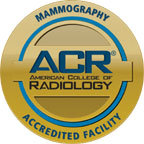The COVID Vaccine & SmartMamm®
As with any vaccination, the COVID vaccine can cause a temporary, localized enlargement in the axillary lymph nodes on the injected side. During your SmartMamm® appointment, we will ask if you’ve recently received the vaccination and in which arm you received it. If your screening study demonstrates enlarged lymph nodes on the affected side, you may be called back for additional imaging, with the understanding that it is likely vaccine related. Since the enlargement only affects a small number of individuals, we recommend scheduling your annual SmartMamm® at your regular time.
Cutting-Edge Mammography in New Jersey and Newtown, PA
Princeton Radiology offers Breast imaging at our New Jersey and Newtown, PA locations. Mammograms offer a safe low-dose X-ray procedure that takes pictures of the internal tissues of your breasts. This simple exam is performed as a screening or diagnostic study, to determine the possibility of irregularities within the breast. It can reveal areas too small or deep to be felt, which may or may not require further investigation. Digital Mammography is the most advanced diagnostic technology available for the early detection of breast cancer.
What is SmartMamm®?
At Princeton Radiology, we have enhanced this gold-standard screening with SmartMamm®, the mammogram that tells women more about their screening needs by assessing their breast cancer risk based on family history. Using the Claus Model we calculate your lifetime risk of developing breast cancer based on age at diagnosis of your first and second degree relatives with a history of breast and/or ovarian cancer. In addition to eventuating your overall risk of developing breast cancer, Princeton radiologists determine your breast tissue density following guidelines established by the American College of Radiology. Dense breast tissue is very common; however it can make it more difficult to find cancer on a mammogram and may require additional studies. SmartMamm® also includes the option of 3D mammography (digital breast tomosynthesis), which is especially beneficial for women with dense breasts.
What is Digital Breast Tomosynthesis (3D Mammography)?
Unlike conventional 2D mammography, Digital Breast Tomosynthesis, also known as 3D mammography or breast imaging, takes a series of 15 low-dose images from multiple angles. With computer processing, these “slices” are pieced together to create a 3D study that a radiologist can manipulate. In addition to reviewing a 2D “single slice” image, doctors can now view your entire breast tissue one millimeter at a time, much like reading through a book “page by page”. Fine details are more clearly visible with 3d mammography because they are no longer hidden by the breast tissue above and below. For more information about 3D Mammography click here.
Does every woman need a mammogram?
Yes. Presently we don’t know the cause of breast cancer, but early detection is a woman’s best protection. Breast imaging may help discover a change as small as the head of a pin, years before it can be felt. Additionally, having mammograms done on a regular basis allows for comparisons of a baseline study with future mammograms. This provides a more accurate assessment of any breast changes. The sooner detected, the easier and more successful the treatment.
When should I have my mammogram?
The American College of Radiology (ACR) and Society of Breast Imaging (SBI), based upon numerous scientific studies, recommend that women at average risk of developing breast cancer get yearly screening mammograms starting at age 40 and continue yearly for as long as they are in good health. Early detection is critical to successful treatment of breast cancer. Clinical research has shown that mammography can help increase the breast cancer survival rate among women ages 40-74.
What will the exam be like?
The screening mammogram will be performed by a woman radiologic technologist who has completed rigorous training dedicated to mammography. She works under close supervision of the radiologist to assure the most accurate results from your examination.
You will be asked to undress from the waist up. The technologist will position your breast and gently compress it upon the image plate. It is necessary to spread the breast tissue to reduce the thickness of the breast. This allows for lower doses of radiation and the clearest possible X-ray image. You will probably have at least two pictures taken in slightly different positions. The procedure will then be repeated for the other breast. The entire exam usually takes about 15 minutes.
Risk Assessment Tool
Mammography Locations
This exam is available at the following locations:
Patient Prep


